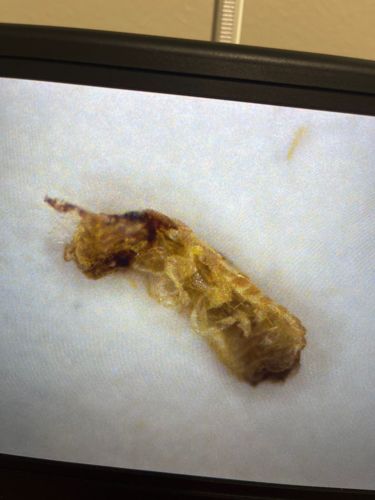Case-bearing Clothes Moth Larva
Scientific Name: Tinea pellionella
Order & Family: Lepidoptera (Moths and Butterflies), Tineidae (Fungus Moths and Clothes Moths)
Size: Larvae typically measure 10-15 mm (0.4-0.6 inches) in length, while the case they build is slightly larger, up to about 12-18 mm.

Natural Habitat
Indoors, particularly in dark, undisturbed areas like closets, attics, storage chests, and behind furniture. They prefer environments with animal-based fibers.
Diet & Feeding
Keratin-containing materials of animal origin, such as wool, fur, feathers, hair, felt, and silk. They may also feed on lint, dust, and synthetic fibers blended with natural ones. The larva eats from within its silk case.
Behavior Patterns
The larva of the case-bearing clothes moth constructs a portable, cigar-shaped silk case, incorporating fibers from its food source, which camouflages it. It carries this case with it as it moves and grows, enlarging it by adding silk and fibers to either end. They are typically slow-moving and prefer dark, secluded areas. Adult moths are poor fliers and tend to run or hop.
Risks & Benefits
Potential risks include significant damage to textiles, clothing, carpets, and upholstered furniture made of natural animal fibers, leading to economic loss. They pose no direct health risk to humans. There are no known significant benefits from this species in human environments.
Identified on: 9/5/2025